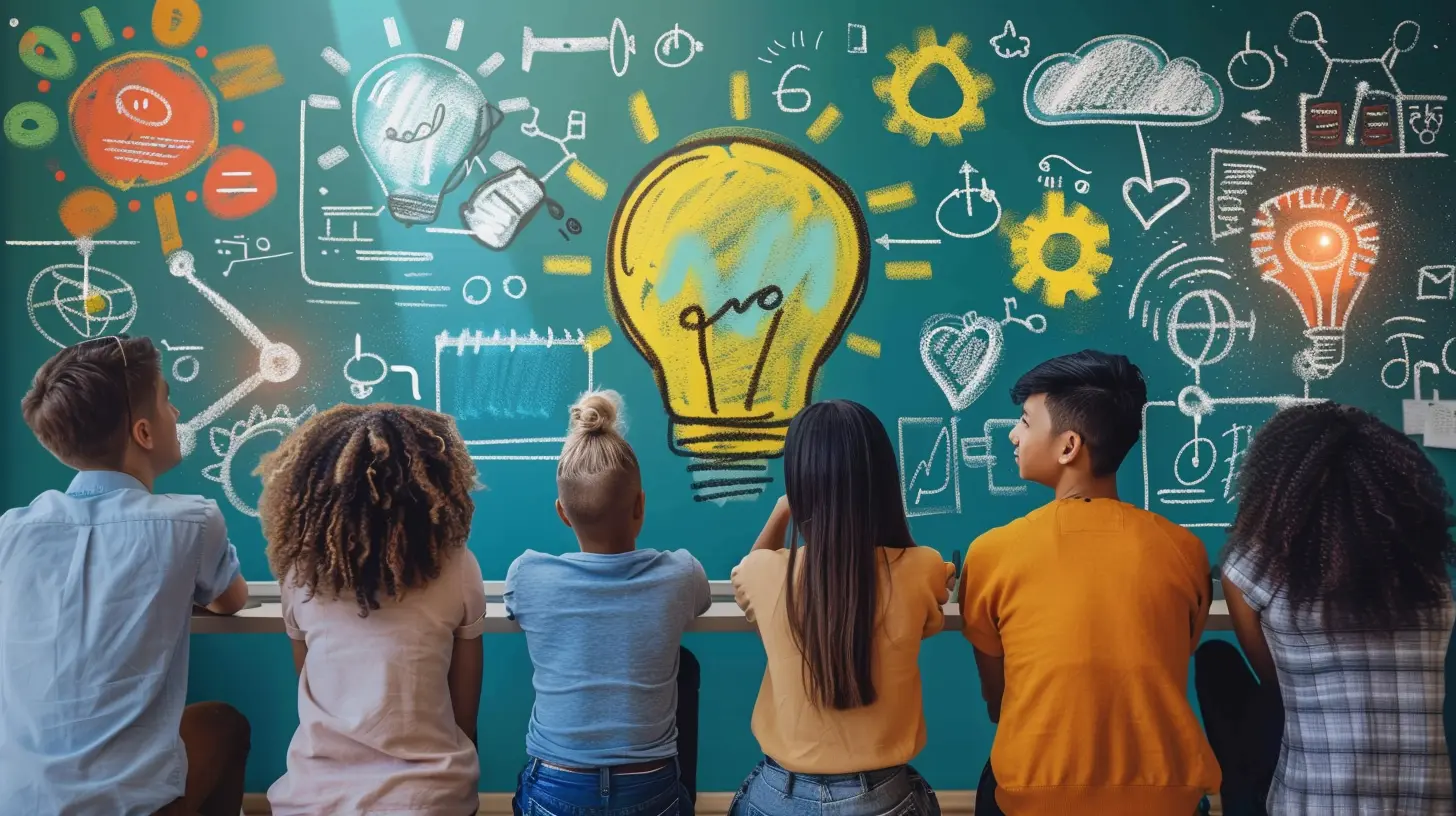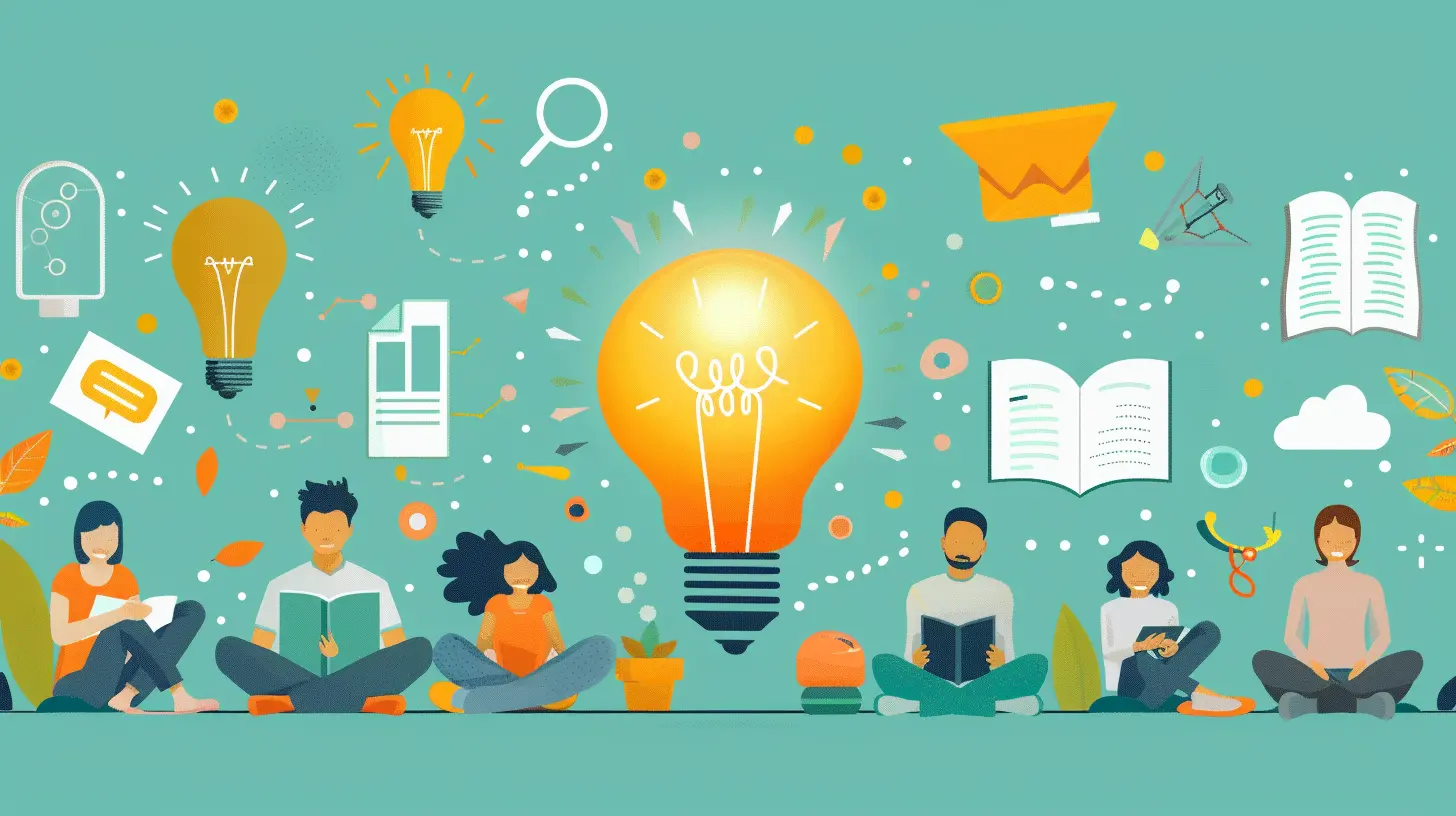Empowering Students through Interactive Learning Activities
8 October 2025
In today’s fast-paced, tech-driven world, traditional lectures just don’t cut it anymore. Gone are the days when students sat still for hours, passively listening to a teacher talk at them. It’s time to mix things up. It’s time for interactive learning. Why? Because when students are actively involved, they don't just absorb information—they own it.
Now, let’s dive into why interactive learning activities are a total game-changer and how they’re empowering students in ways that textbooks and whiteboards simply can’t.
What Is Interactive Learning Anyway?
Think of interactive learning as education’s version of a group workout. Instead of sitting on the sidelines, students get up, get involved, and take charge of their learning. This approach combines hands-on experiences, collaboration, and real-world applications to help students deeply understand and retain knowledge.Whether it’s through group discussions, role plays, simulations, digital games, or peer feedback, interactive learning makes the classroom feel like a two-way street, not a one-way lane.
Why Traditional Learning Falls Short
Let’s be real—many students find traditional learning methods boring, stressful, or just plain irrelevant. Sitting through lectures, filling out worksheets, and memorizing facts can feel more like a chore than an adventure.Worse, this passive approach doesn’t always prepare students for real life. It teaches them to repeat, not to think. And in a world that values creativity, adaptability, and problem-solving, that’s a huge miss.
The Benefits of Interactive Learning Activities
Interactive learning doesn’t just make class more fun (although that’s a great bonus). It has real, tangible benefits that impact how students learn and grow. Let’s break them down:1. Boosts Engagement and Motivation
When students are part of the process, they pay more attention. Activities like debates, games, and multimedia presentations make learning exciting. It’s like switching from black-and-white TV to full-color HD.2. Builds Critical Thinking And Problem-Solving Skills
Interactive lessons often involve open-ended problems that require more than a simple answer. Students have to think outside the box, evaluate options, and make decisions—skills they’ll need for life beyond school.3. Encourages Collaboration and Communication
Working in teams helps students develop soft skills—like cooperation, empathy, and negotiation—that are just as important as academic smarts. It also gives shy students a chance to shine in smaller group settings.4. Makes Learning Stick
Ever noticed how you remember something better when you’ve done it yourself? That’s the power of action-based learning. Students retain more when they do rather than just hear.5. Caters to Different Learning Styles
Not everyone learns the same way. Some are visual learners, some need hands-on practice, and others excel through discussion. Interactive activities give every student a chance to learn in a way that works best for them.
Types of Interactive Learning Activities
So how do we bring this magical method into reality? There are a ton of interactive strategies out there. Here are a few of the best:1. Group Projects
Working on a project together makes students brainstorm, delegate, and collaborate. It teaches responsibility and teamwork—a powerful combo.2. Role Playing
Want students to really understand history or literature? Have them step into the characters’ shoes. Role-playing builds empathy and deeper understanding.3. Classroom Debates
Debates sharpen speaking skills and critical thinking. Plus, they make students look at both sides of an issue, which is super useful in today’s polarized world.4. Educational Games
Who says learning can't be fun? Games turn boring content into a challenge worth beating. Think quiz apps, crossword puzzles, treasure hunts, or even escape rooms.5. Peer Teaching
When students teach each other, they reinforce their own understanding. It’s like the old saying: “If you can teach it, you know it.”6. Simulations and Virtual Labs
Digital tools can simulate real-life experiences, from science experiments to business simulations. They make abstract concepts come alive.7. Think-Pair-Share
In this simple technique, students think about a question on their own, pair up to discuss it, then share ideas with the class. It builds confidence and encourages meaningful conversation.Using Technology to Supercharge Interactivity
Let’s face it—students today are digital natives. So why not use that to our advantage?1. Use of Learning Management Systems (LMS)
Platforms like Google Classroom or Canvas let students access discussions, submit work, and get feedback all in one place.2. Interactive Whiteboards and Smart Screens
Instead of a regular chalkboard, use interactive tech that allows students to drag, drop, draw, and explore—right on the board.3. Online Collaboration Tools
Apps like Padlet, Jamboard, or Miro let students brainstorm and collaborate on ideas in real time, no matter where they are.4. Kahoot and Quizlet
These sites turn quizzes into exciting competitions. Students get instant feedback, and teachers collect data to adjust their lessons.5. Augmented and Virtual Reality (AR & VR)
Ever wanted to walk on Mars or dissect a frog without the mess? AR and VR make it possible. Immersive tech takes learning to a whole new level.Teacher’s Role in Interactive Learning
Hold up—you might be wondering, “If students are doing all the work, what’s the teacher doing?”Good question.
In interactive learning, the teacher becomes more of a facilitator or mentor. They guide discussions, pose challenging questions, and create a supportive environment. They’re not the only source of knowledge anymore—instead, they help students discover it for themselves.
It’s about shifting from “sage on the stage” to “guide on the side.”
Preparing Students for the Real World
Let’s not sugarcoat it—the world is unpredictable, fast-changing, and competitive. Employers want problem-solvers, team players, and lifelong learners.Interactive learning prepares students for that reality. It helps them:
- Think critically
- Communicate clearly
- Work collaboratively
- Adapt quickly
- Solve real problems
It’s not just education. It’s training for life.
Common Misconceptions About Interactive Learning
Before we go, let’s bust a few myths:“It takes too much time!”
Sure, it needs some prep work, but the payoff in engagement and understanding is totally worth it.“Students won’t focus.”
Actually, they’re more likely to stay focused because they’re actively involved. No more snoozing at the back of the class.“It only works for younger kids.”
Interactive learning benefits students of all ages—from elementary kids to college students to adult learners.How Schools Can Support Interactive Learning
Let’s not leave teachers to figure it out on their own. Here’s how schools can step up:- Provide training and professional development
- Invest in tech tools and resources
- Encourage collaboration among teachers
- Offer flexibility in curriculum plans
- Create a culture that values innovation
When schools back interactive learning, everyone wins.
Final Thoughts
Interactive learning isn’t just some trendy buzzword. It’s a powerful way to empower students and transform education from a monologue into a dialogue.When students feel heard, challenged, and involved, they don’t just learn—they thrive. They develop the mindset and skills they need to navigate the modern world with confidence.
So let’s stop talking at students and start learning with them.
Because when learning is a team sport, everyone does better.
all images in this post were generated using AI tools
Category:
Student EngagementAuthor:

Olivia Lewis
Discussion
rate this article
1 comments
Alisha Lee
Interactive learning activities truly transform education, fostering engagement and empowering every student to succeed!
October 17, 2025 at 11:46 AM

Olivia Lewis
Thank you! I completely agree—interactive learning not only boosts engagement but also cultivates students' confidence and success.


